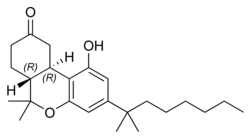A central nervous system stimulant, methylphenidate is also used to control narcolepsy , a condition characterized by an overpowering desire to sleep. Methylphenidate comes in short- and long-acting tablets. The latter should be swallowed whole, never broken into smaller pieces or chewed.
Initially methylphenidate is prescribed in two daily doses of 0.25 mg each, taken at breakfast and lunch times. The dosage is gradually increased until the daily amount reaches 1.0 mg. The dosages should be strictly followed and always accompanied by a meal or snack. The primary side effect of methylphenidate is growth suppression. Others include irritability, restlessness, agitation, nausea, and headaches. Occasionally it causes sleeplessness, in which case the last dosage of the day should be a short-action tablet. Physicians often recommend regular drug-free periods to combat these side effects. In many cases, the child only takes methylphenidate during the school year.
Persons taking methylphenidate should be aware of the possible adverse interactions with the following drugs: amphetamines, appetite suppressants, caffeine, chlophedianol, cocaine, asthma medication, cold, sinus and hay fever medications, nabilone, pemoline, monoamine oxidase inhibitors, and pimozide. Methylphenidate is also affected by epilepsy, Tourette syndrome , glaucoma, high blood pressure, psychosis, severe anxiety, and tics . Methylphenidate can be addictive and dosage should be tapered off gradually. Signs of physical dependency include the need to increase the dosage in order to achieve results, mental depression , unusual behavior, and unusual tiredness or weakness. Some medical professionals believe that methylphenidate is prescribed too often. They call for better diagnostic procedures conducted by trained personnel rather than relying primarily on subjective observations by parents and teachers.
Further Reading
For Your Information
Publications
- Advice for the Patient: Drug Information in Lay Language. Edition 16. USP DI-Volume II, 1996.
Gale Encyclopedia of Childhood & Adolescence. Gale Research, 1998.



